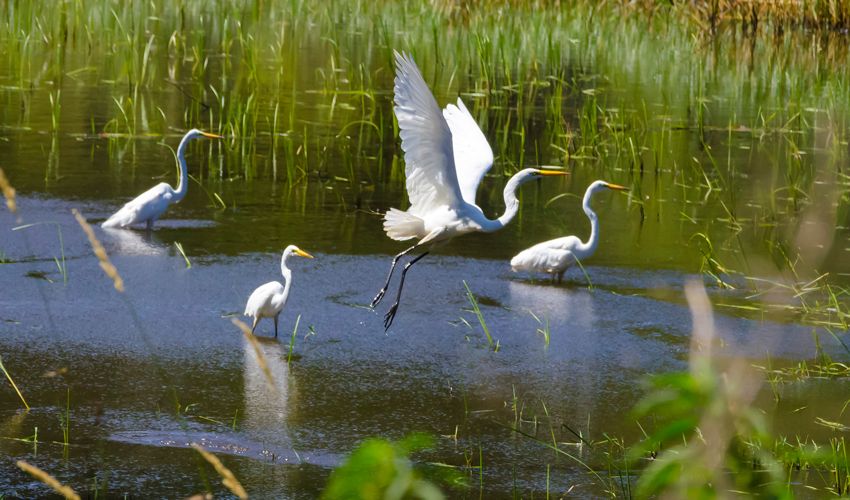“Wetlands and human well-being‘ is the theme of World Wetlands Day 2024. This year’s campaign highlights the profound connection between wetlands and human life, as people derive livelihoods, inspiration and resilience from these productive ecosystems. Importantly, the 2024 theme highlights the way in which all aspects of human well-being are linked to people’s health. wetlands of the world. It calls on each of us to value and protect nature wetlands.
In the last century, Spain has lost more than 60% of its wetlands. Less than a third is well preserved, the rest is in danger of disappearing. After the practical disappearance of the Tablas de Daimiel, or the serious consequences for the Mar Menor and the Albufera, Doñana may also disappear in the short term. Droughts, such as the current one, worsen the situation: because less water is available and external demand continues to increase, wetlands remain dry and lose their biodiversity. There is an urgent need to tackle the causes of the damage, especially industrial agriculture and livestock farming, and climate change.
It will be celebrated next Friday, February 2, although there is not much to celebrate. Spain has lost more than 60% of its wetlands in the past century. Loose wetlands They are vulnerable natural areas that are strongly threatened by human activity, industrial agriculture and livestock farming (intensive irrigation, overexploitation of groundwater layers, pollution…) and by climate change (drought, temperature rise…). Suffice to say that the average amount of dammed water in the country is currently around 50%, with the situation being particularly worrying in areas such as Catalonia and Andalusia.
Drought further aggravates the painful situation of wetlands
As there is less water and external demand continues to increase, these enclaves remain dry, resulting in the loss of their biodiversity and associated ecosystems. And this is a problem because of the importance of wetlands for biodiversity, hydrological balance, climate change mitigation, and even for human water supplies themselves.


According to the latest government inventory Spain has more than 2,000 wetlands, although other sources increase this figure to 5,767 (2). This shows how wetlands are the largest forgotten, without even knowing how many exist or what situation they are really in.
Using MITECO data, only 27% of wetlands are well preserved or in a moderate state of conservation. The rest are at great risk of disappearing. Unfortunately this has already happened large water areas such as the Antela Lagoon (Ourense), La Janda (Cádiz) or La Nava (Palencia).
And instead of slowing down this process, it currently continues to accelerate. After the virtual disappearance of the Tablas de Daimiel National Park, or the serious consequences for the Mar Menor in Murcia and the Albufera in Valencia, it is time to see how in the short term another of our natural jewels, the National Park, threatens also to disappear from Doñana.
The National Park of Doñana is home to unique biodiversity in Europe, habitat of the Iberian lynx and a passage, breeding and wintering place, the key for thousands of European and African birds. However, its conservation conflicts with the economic interests of industrial and intensive agriculture and with the apathy and complacency of the various authorities that manage this natural environment. For years, illegalities have been allowed regarding the use of water and the increase in irrigated areas. Greenpeace revealed in 2023 that between 10% and 15% of the total red fruit production in the northern crown of the National Park is irregularly irrigated.
Our wetlands need more actions and institutional involvement
It is not enough to record or propose plans on paper, They all need to be urgently repaired and the functions damaged by human intervention restored.
The recent agreements between the central government and some autonomous communities (for example Andalusia or Murcia) are not sufficient for this preserving our wetlands. It is necessary to take urgent measures, such as adapting our demand to the actual available water or reducing intensive irrigation, to conserve and restore wetlands, and to raise awareness in society about their value and vulnerability. These critical nature reserves are home to great biodiversity and provide essential ecosystem services, such as regulating the water cycle, mitigating climate change and purifying pollutants.

